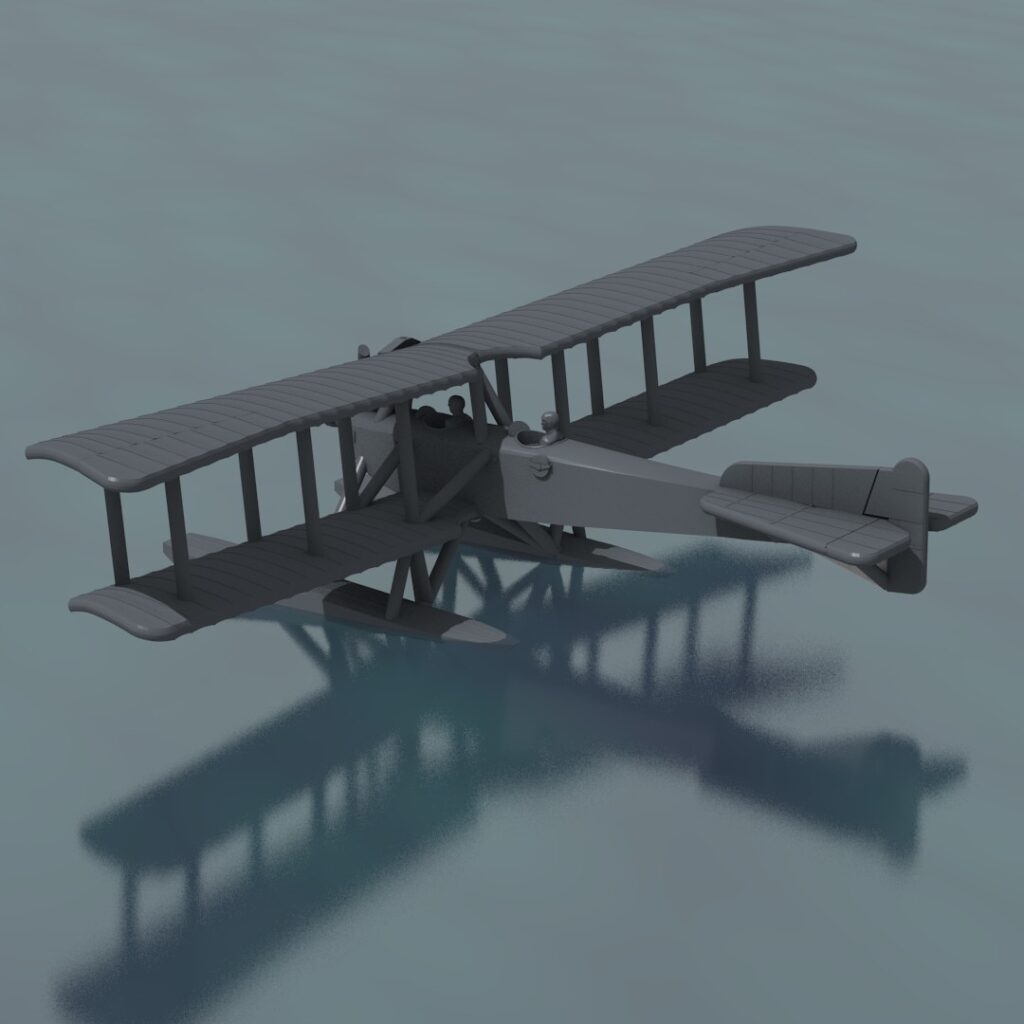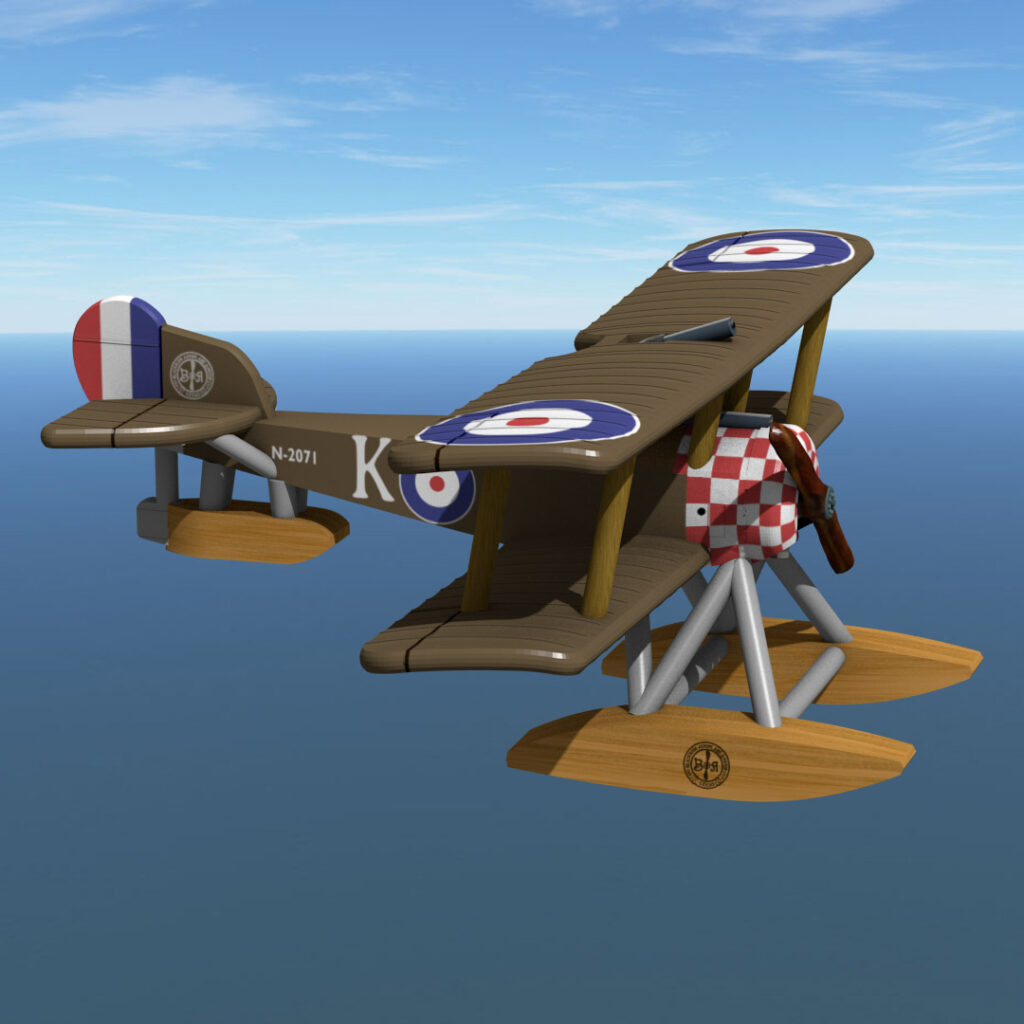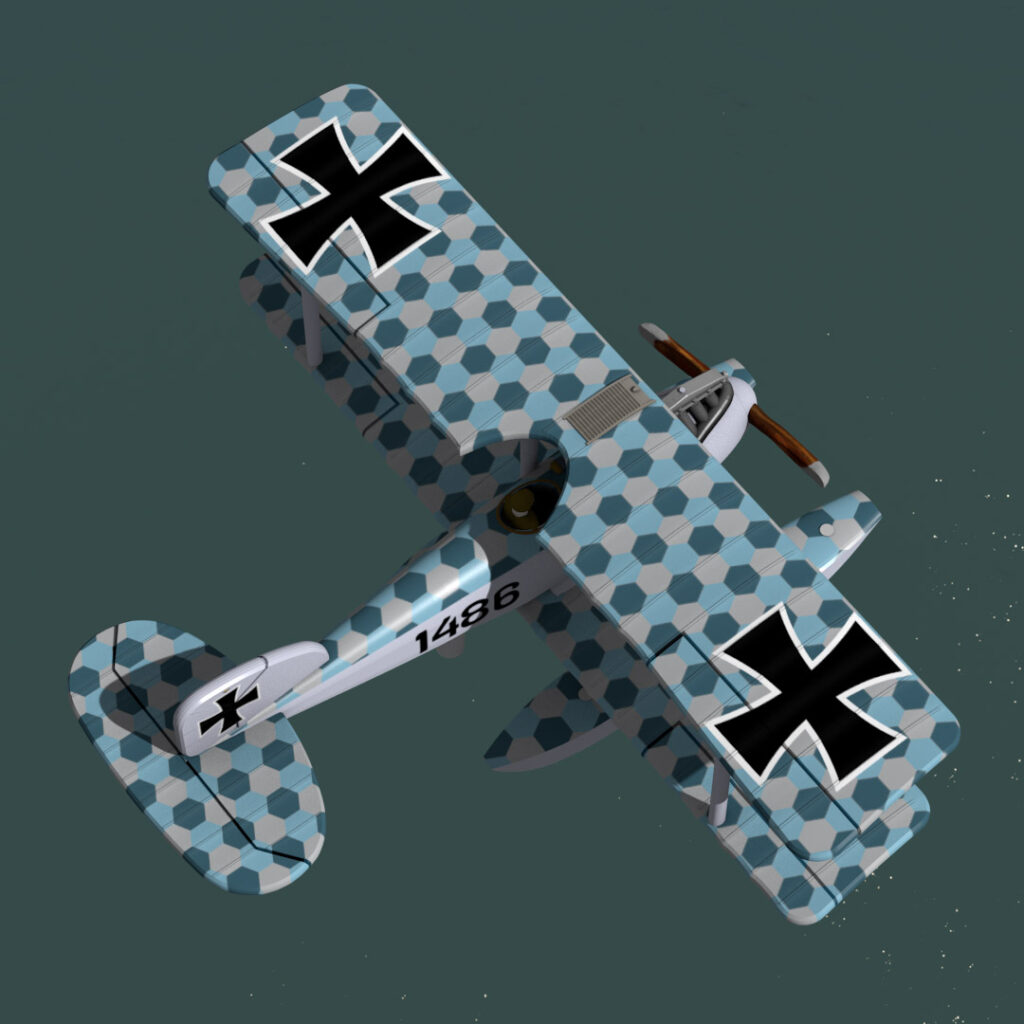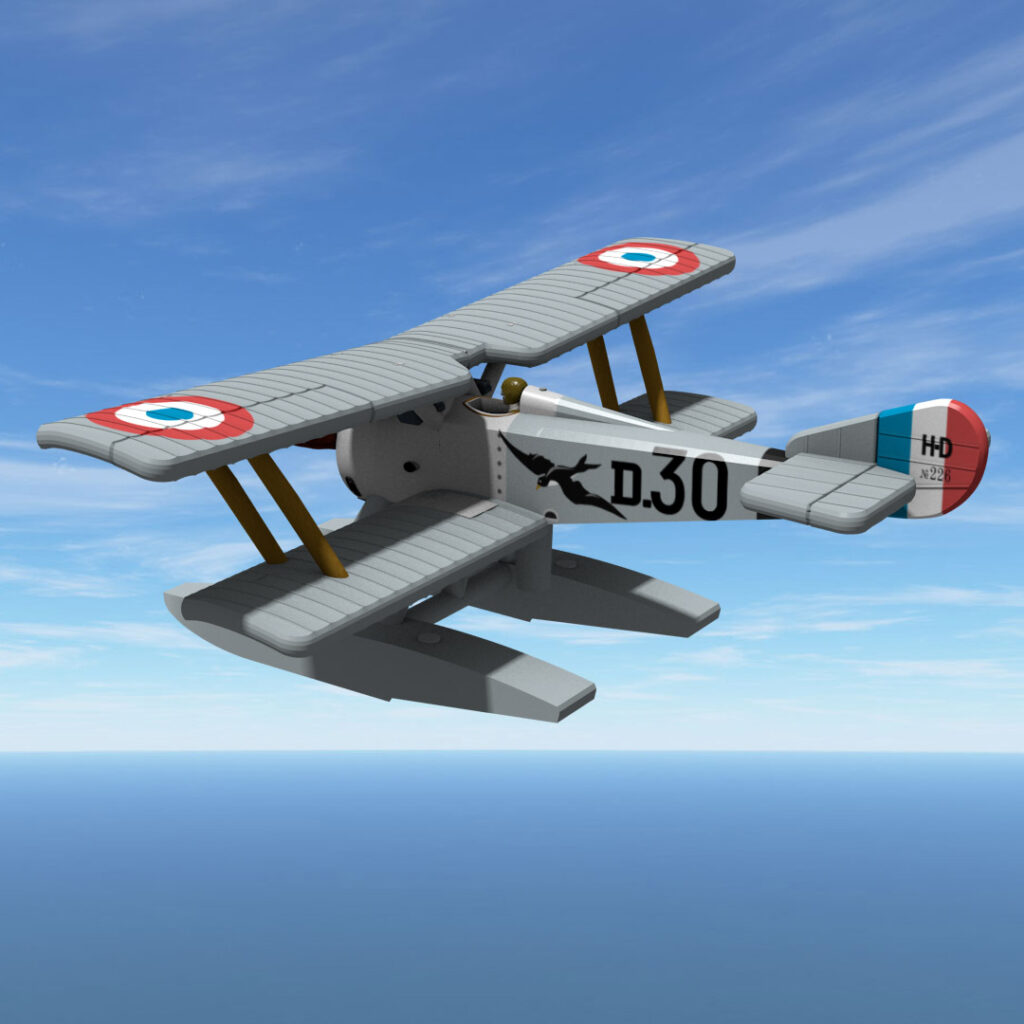The Friedrichshafen FF.33e was another in the long line of seaplanes, this one using the reliable 150hp Benz Bz.III engine. It is the first FF.33 model with a rear under-fin rather than a rear float. Like about half the FF.33 models, this plane was fitted with a radio (transmitter only) rather than a rear gun, though sometimes the radio was replaced with a rear flexible Parabellum. The FF33 was said to be easy to fly and it handled well on the water as well, and the FF.33e was the most common of the Friedrichshafen seaplanes. The most famous FF.33e was number 841, the Wölfchen, which accompanied the SMS Wolf on its long raiding voyage through the Pacific and Indian oceans of November 1916 through February 1918.
The first three prototypes, where were ordered in March 1915, were originally named the Friedrichshafen FF.33c, but they were subsequently renamed as FF.33e’s as the production run began. In May 1917, 121 FF.33e seaplanes were in service.
A paintable 1:144 Friedrichshafen FF.33e miniature is now available from Great War Planes by Reduced Aircraft Factory.





